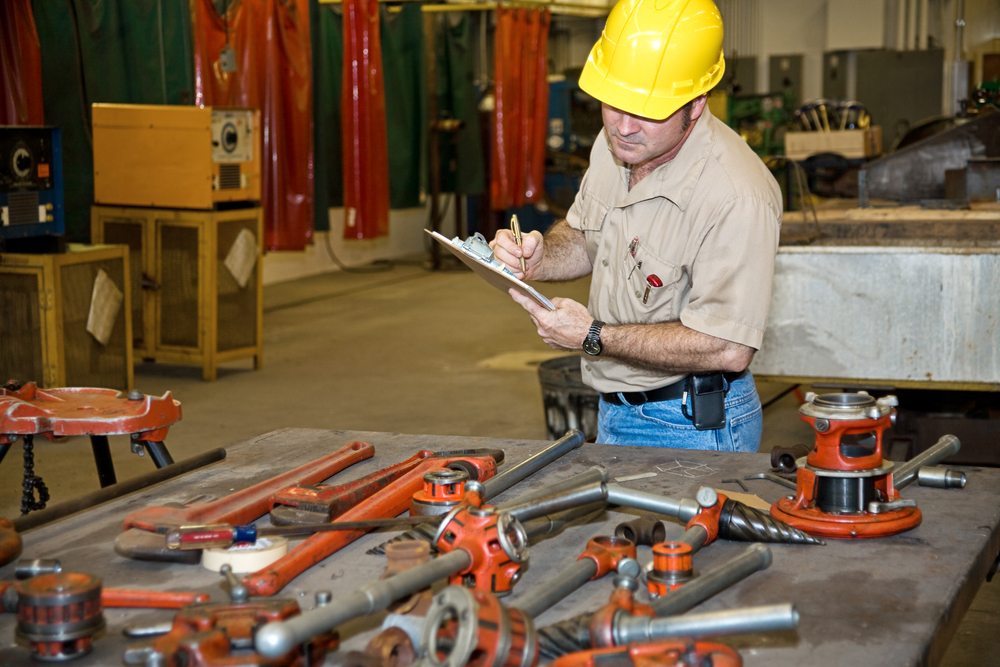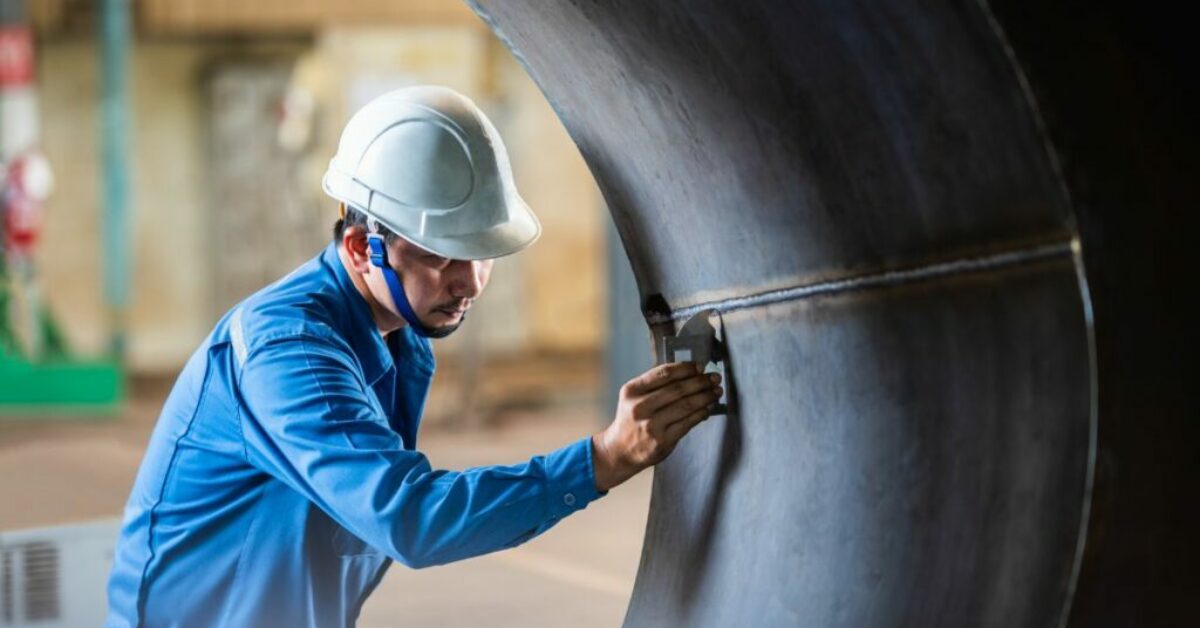Why Select Professional Welding Inspection Madison for Your Projects
How Effective Welding Examination Boosts Structural Stability and Durability
In the realm of building and design, the relevance of welding examination can not be overstated, as it plays a critical role in guaranteeing architectural stability and expanding the life expectancy of tasks. Join the expedition of how reliable welding assessments can transform potential vulnerabilities right into toughness, adding to the long-lasting success of building and constructions.
Importance of Welding Examination
Guaranteeing the structural integrity and security of welded constructions requireds extensive welding evaluation procedures. Welding assessment works as an essential guard in the construction and manufacturing industries, where the strength and longevity of joints significantly impact the general performance of frameworks. This assessment ensures that welds meet particular requirements and specs, lessening the dangers connected with architectural failings. The repercussions of poor welds can be devastating, resulting in pricey repairs, functional downtimes, and even catastrophic failings, all of which highlight the extremely important significance of extensive examination.
In addition to security, welding assessment plays a crucial function in top quality guarantee. Sector standards and codes, such as those from the American Welding Society (AWS) or the International Organization for Standardization (ISO), require adherence to strict guidelines, emphasizing the relevance of inspections in satisfying these professional and lawful commitments.
Trick Evaluation Methods

Ultrasonic Evaluating (UT) makes use of high-frequency acoustic waves to spot subsurface flaws, offering exact details concerning weld stability without causing any type of damages. Radiographic Testing (RT), involving X-rays or gamma rays, supplies a comprehensive photo of the weld's internal framework, exposing hidden flaws. Magnetic Particle Testing (MPT) is another non-destructive technique, especially efficient for discovering surface area and near-surface gaps in ferromagnetic materials.
Penetrant Testing (PT) includes the application of a liquid dye to disclose surface-breaking flaws, offering a economical and uncomplicated remedy for non-porous materials. Each strategy has its specific applications, staminas, and restrictions, and often a mix of approaches is employed to attain extensive evaluation outcomes. Proficiency of these methods enhances the integrity and durability of bonded frameworks, aligning with safety and efficiency expectations.
Identifying Common Issues
Porosity, defined by gas pockets within the weld, decreases the weld's stamina and durability. Cracks, which can take place throughout or after welding, pose considerable dangers due to their potential to circulate under stress.
Incomplete blend, where the weld steel stops working to bond completely with the base product, threatens the architectural stability, resulting in weak joints. This flaw usually comes from not enough warmth input or incorrect welding method. Slag additions happen when non-metallic materials are trapped in the weld, compromising its stamina and top quality. These are often an outcome of poor cleansing between weld passes or incorrect flux use.
Recognizing these defects through precise assessment approaches, such as aesthetic exam, ultrasonic testing, or radiography, is important. Dealing with these issues makes certain weld high quality, ultimately supporting the structural stability and safety and security of the constructed environment.

Enhancing Structural Performance
Comprehending the importance of determining typical more weld problems naturally causes checking out techniques for boosting architectural efficiency. The foundational approach for boosting performance entails using sophisticated welding strategies and products that minimize problem occurrence. Utilizing top quality filler materials and ensuring proper heat control can substantially minimize concerns such as porosity and cracking, thereby boosting the weld's integrity.
Integrating state-of-the-art welding technologies, such as laser welding and rubbing stir welding, further amplifies structural resilience. These techniques provide exceptional precision and minimized thermal distortion, straight affecting the longevity and toughness of the welded frameworks. Furthermore, adopting automated welding systems can guarantee constant and repeatable weld quality, reducing human error.
Furthermore, implementing rigorous pre-weld and post-weld procedures is critical. Proper joint layout, surface area preparation, and stress-relieving processes add to ideal weld performance. Carrying out thorough pre-weld evaluations enables for very early detection of potential issues, promoting timely adjustments prior to they jeopardize the structure.
Long-term Benefits of Evaluation

Via vigilant examination methods, the long-lasting advantages to structural stability become increasingly apparent. Extensive and regular welding examinations play a critical function in avoiding structural failures by identifying flaws and disparities early in the building and construction procedure. This aggressive technique makes certain that possible issues are attended to before they can endanger the safety and longevity of structures. By catching flaws early, pricey repair work and downtime are reduced, inevitably expanding the lifespan of the framework.
Moreover, regular assessments add to preserving compliance with sector standards and regulations, consequently avoiding monetary and legal repercussions. This adherence to quality control not just boosts the dependability of the framework however additionally fosters count on among stakeholders, consisting of customers, engineers, and regulatory bodies. The thorough documents of assessment results functions as a useful source for future repair and maintenance initiatives, helping with notified decision-making.
Additionally, effective assessment methods sustain technology by incorporating advanced innovations such as non-destructive screening and electronic imaging, which can enhance accuracy and performance. This technological assimilation even more highlights the commitment to quality in structural honesty. Ultimately, buying meticulous welding examinations is a prudent approach that produces considerable long-lasting benefits, securing both the economic and physical financial investment in infrastructure projects.
Conclusion
Reliable welding assessment plays a crucial role in boosting structural integrity and durability by recognizing look at here now issues early in the building procedure. Making use of strategies such as aesthetic examination, ultrasonic screening, and radiographic screening ensures the detection of concerns like cracks and porosity that compromise weld strength. Extensive inspections make sure compliance with market standards, therefore prolonging the lifespan of structures, lessening costly fixings, and cultivating stakeholder trust in the integrity and security of bonded buildings.
In the world of building and construction and engineering, the significance of welding assessment can not be overstated, as it plays a pivotal function in making certain structural honesty and extending the life-span of projects.Making certain the structural integrity and safety of bonded buildings requireds extensive welding evaluation processes.Structure upon the value of welding inspection in guarding structural integrity, comprehending the his response crucial evaluation techniques becomes important for reliable execution. Effective welding evaluation includes a variety of techniques made to review weld quality, guaranteeing conformity with stringent engineering criteria - Welding Inspection Madison.Effective welding evaluation plays an important role in boosting architectural honesty and durability by identifying issues early in the building procedure